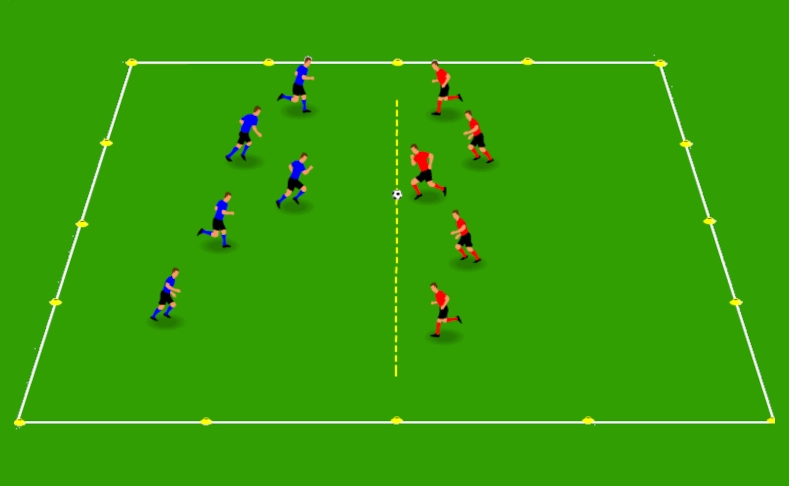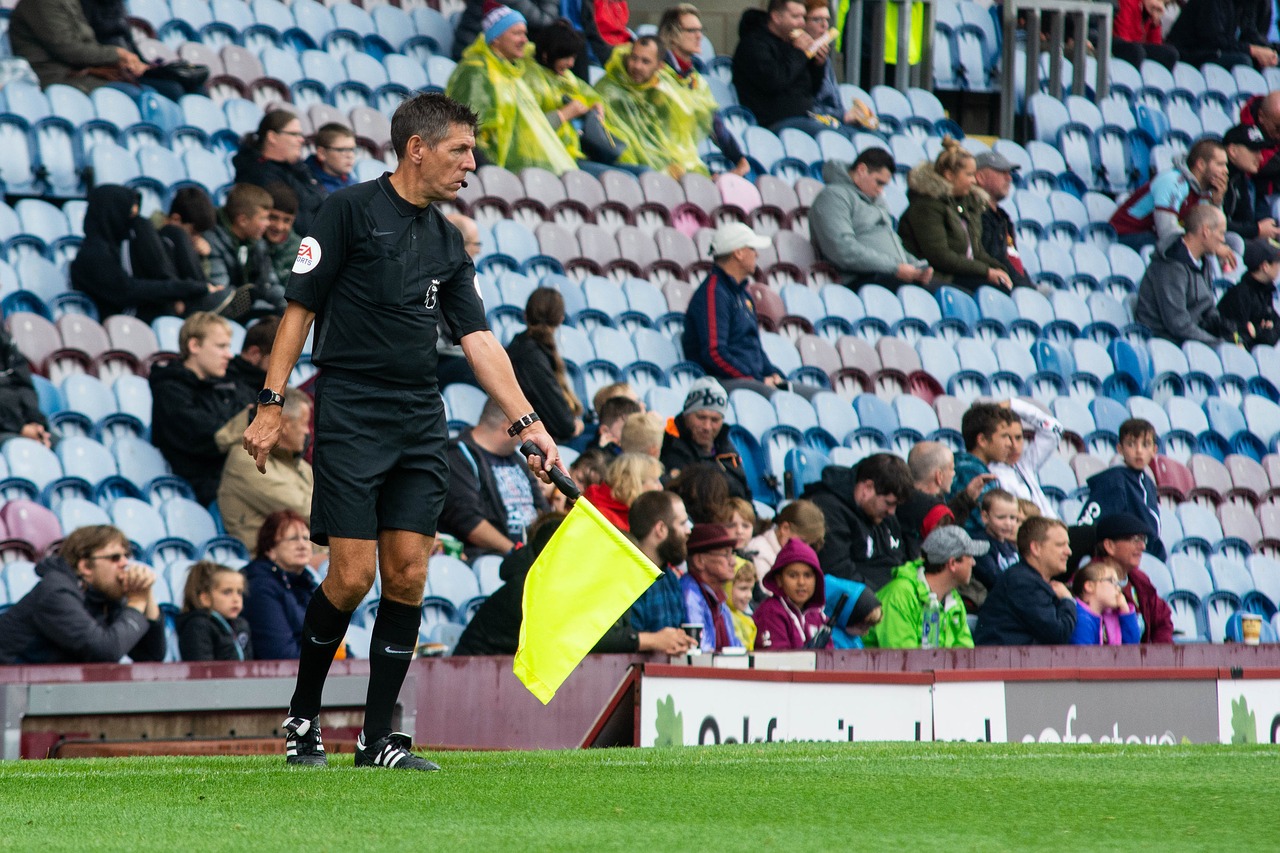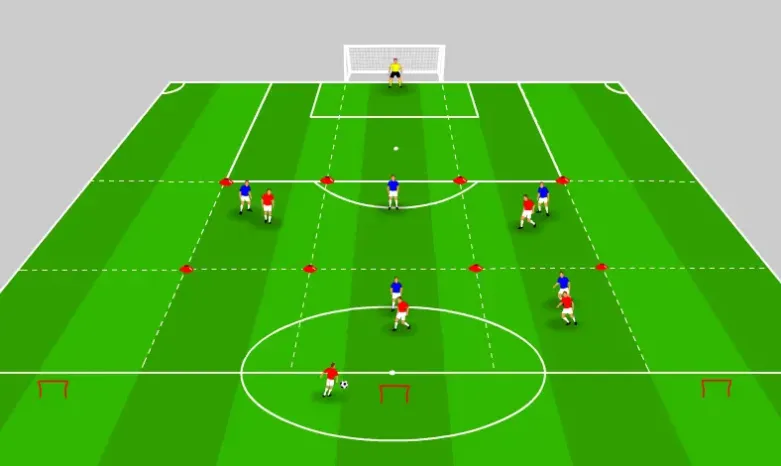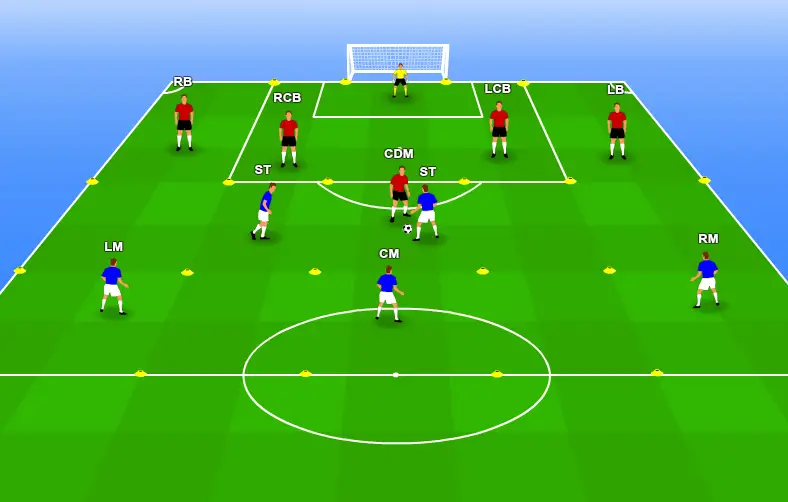Spatial Awareness Drill: Football with Rugby Rules

Need a fresh way to reinforce spacing and discipline? Borrow rugby’s offside rule. In this hybrid game every attacker must remain behind the ball carrier, defenders must stay between the ball and their own goal, and a “goal” only counts when someone dribbles across the goal line under control. The constraints make players scan constantly and value body orientation before driving forward.
Setup
- Players: 10–14 split into two even sides.
- Area: Half pitch (or 50x40m) with cones highlighting touchlines, halfway, and goal line.
- Equipment: Standard balls plus spare cones to mark the “goal line” and any neutral zones.
Assign one player per team as the “carrier” to restart play after stoppages. Everyone else fans out but must stay alert; drifting ahead of the ball will cost possession instantly.
Rules of play
Rugby-style offside
- Attackers must always stay behind the ball carrier.
- Defenders must remain between their goal line and the ball—no chasing from behind.
- Any breach produces an immediate turnover at the spot of the infringement.
Scoring condition
- Goals only count when a player dribbles across the opponent’s goal line while in control of the ball.
- Forward passing is allowed, but the runner must begin their movement from behind the ball.
- If the carrier is tackled or the ball goes out, restart with a free pass for the other team.
Flow & transition
- Begin with a neutral pass from the halfway line.
- Encourage short passes and supporting runs from behind to build momentum.
- Once a gap opens, the carrier accelerates toward the goal line while teammates shadow behind for support or recycle.
Coaching cues
- Scan before every touch—players must know who is behind them to avoid offsides.
- Travel in mini-blocks; treat the unit like a rugby pod that advances together.
- Defenders hold shape rather than dive in; patience and communication are rewarded.
- Promote calm tempo—forcing a forward ball with no support simply causes a turnover.
Variations
- Touch-limit: Two-touch maximum for attackers to increase tempo.
- Neutral link players: Station neutrals on the flanks who can only receive behind the ball to mimic overlapping fullbacks.
- Counter bonus: Award double points if the defending team wins the ball and immediately carries over the halfway line under control.
Takeaways
- Spatial awareness. Players constantly gauge whether they are behind or ahead of the ball, tightening their understanding of depth.
- Circulation discipline. Keeping shape behind the carrier builds better possession habits than mindless forward runs.
- Timing & precision. Since goals require a controlled carry, players learn to pick the perfect moment to accelerate.
- Defensive organisation. Staying between the ball and the goal polishes zonal defending principles.
- Team cohesion. Communication spikes because one mistimed run can undo an entire attack.
Tried this hybrid game? Show us your pitch layout or tweaks on Facebook or tag @footballtechnik on Instagram—we love seeing how coaches teach spacing.



